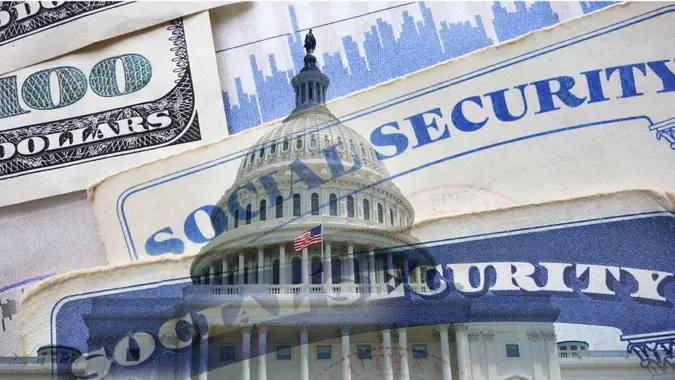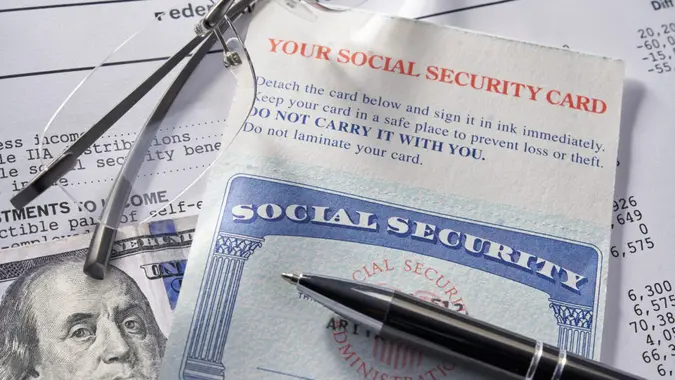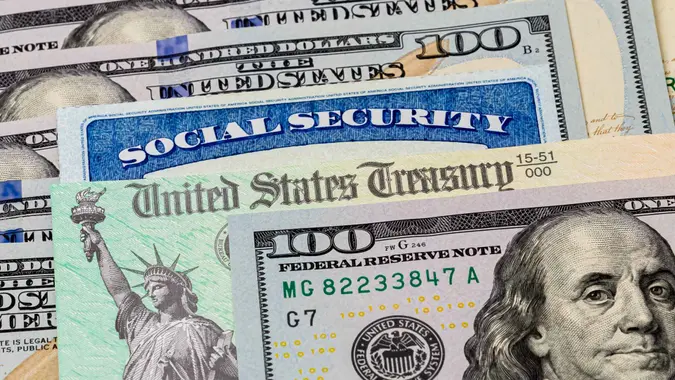4 Reasons You Need $1.6 Million (Plus Social Security) To Retire in Hawaii

Commitment to Our Readers
GOBankingRates' editorial team is committed to bringing you unbiased reviews and information. We use data-driven methodologies to evaluate financial products and services - our reviews and ratings are not influenced by advertisers. You can read more about our editorial guidelines and our products and services review methodology.

20 Years
Helping You Live Richer

Reviewed
by Experts

Trusted by
Millions of Readers
It’s one thing to set your retirement sights on a tropical island, it’s another to be able to financially plan for it. Hawaii is one of the most expensive retirement destinations in the United States, and this doesn’t mean it’s impossible to retire in, but it does mean your 401(k) plans, Roth IRAs, private pensions and other retirement investments and accounts may have their work cut out for them. Before you start envisioning sandy beaches, boat drinks and waterfalls, you might want to chase down a financial advisor to see what’s feasible for your future.
GOBankingRates recently did a study to determine the minimum retirement savings you need in each state, plus Social Security, to retire comfortably. The study was broken into how much you would need for 20, 25 or 30 years in retirement based on such financial factors as the average cost of living, Social Security income, healthcare, transportation, groceries and utilities. Here are some key takeaways:
- The national average Social Security income is $21,567 which is a good barometer to compare what your projected retirement income will cover in Hawaii.
- From the original study, Hawaii was found to be the most expensive state to retire in with an average annual cost of living coming in over $100,000.
- The minimum savings needed to retire in Hawaii for 20 years: $1,640,862
- The minimum savings needed to retire in Hawaii for 25 years: $2,051,077
- The minimum savings needed to retire in Hawaii for 30 years: $2,463,757
4 Reasons Social Security and $1.6 Million Only Buys You 20 Years of Hawaii Retirement
A Hawaiian island escape may be just what your retirement ordered, but before you bet on the beach house, make sure you are realistic which how much it will take to live out your golden years comfortably. No matter if it’s a tiny beach town on the North Shore or a major metropolitan area like Honolulu, there are several retirement benefits except for, of course, what you’ll have to pay. Here are four reasons you’ll need at least $1.6 million to retire for 20 years while living in Hawaii.
1. Living in Paradise Comes With Sky-High Housing Prices
- Average annual housing cost: $35,812.60
Hawaii has a diverse landscape, especially when it comes to real estate. The majority of the housing market is on the higher side, but even everything from single-family homes to middle-class dwellings may come with millionaire price tags. GOBankingRates found that, on average, residents of Hawaii pay about $35,813 a year on housing costs alone.
2. Big Monthly Bills Eat Into Your Retirement Budget
- Average annual cost of healthcare: $9,485.32
- Average annual cost of utilities: $6,913.15
- Average annual cost of groceries: $5,339.06
Everything has to be imported to the Hawaiian Islands which ultimately drives up the cost of everything from food at the grocery store to prescription medications. Judging from the higher costs of groceries, utilities and healthcare, living on a remote island may have its financial downsides.
3. Cars Cost More on the Islands
- Average annual cost of transportation: $6,238.07
Not only is having a car expensive, but it seems to be compounded by the high gas prices and other transportation costs in Hawaii. This is due to gas having to be shipped to a remote location, among other factors. GOBankingRates found that the average annual transportation costs are about $6,238.
4. Retirement Costs Are Higher in Hawaii — Before and After Social Security
- Average annual total cost of living: $103,609.86
- Average annual total cost of living after Social Security: $82,043.10
- The minimum savings needed to retire in Hawaii for 20 years: $1,640,862
- The minimum savings needed to retire in Hawaii for 25 years: $2,051,077
- The minimum savings needed to retire in Hawaii for 30 years: $2,463,757
There is no way around the high cost of living with it comes to retiring anywhere in the state of Hawaii. It’s not to say that the prices aren’t worth it given the breathtaking landscapes and laidback island vibes, but there is a point where you have to be realistic about your finances and savings. This is why it is helpful to know just how much you need to aim for when setting your retirement financial goals.
Final Take To GO: Hawaii Retirement
The bottom line is that whether it’s property taxes in Hawaii or just the cost of coconuts at the grocery store, there are many pros and cons of making the Big Island, or any island your retirement plan. However, with careful and strategic financial planning, your island getaway could turn into a long retirement stay.
Methodology: To find out exactly how much you need to retire in your state, GOBankingRates found the annual cost of expenditures for a retired person in each state by multiplying the 65-year and older expenditures from the Bureau of Labor Statistics’ 2022 Consumer Expenditure Survey by the cost-of-living index for each state from the Missouri Economic Research and Information Center’s Q3 2023 cost-of-living series. To find how much money a retired person would need to save, we divided each state’s annual expenditures, minus the annual Social Security income as sourced from the Social Security Administration’s Monthly Statistical Snapshot, March 2022, by 0.0333%, 0.04% and 0.05%; assuming 20, 25 and 30 years of retirement respectively. All data was collected and is up to date as of Jan. 8, 2024.
 Written by
Written by  Edited by
Edited by 
























